OCD vs. Autism

Understanding OCD and Autism: Key Clinical Features and Diagnostic Criteria
OCD (Obsessive-Compulsive Disorder) and Autism Spectrum Disorder (ASD) are complex conditions that can present with overlapping symptoms, particularly involving repetitive behaviors and sensory sensitivities. Accurate diagnosis requires understanding the core features, typical onset ages, and diagnostic frameworks. OCD is characterized by persistent, intrusive obsessions such as fears of contamination or harm, accompanied by compulsions like washing or checking, which are performed to reduce anxiety and interfere significantly with daily life. Autism involves challenges with social communication, along with restrictive and repetitive behaviors that are often pleasurable or serve self-regulation purposes rather than distress. ASD traits can be identified reliably from early childhood, often before age 2, through developmental assessments based on behavioral criteria. Both conditions can coexist, complicating diagnosis but offering important clues for targeted intervention.
Core Clinical Features and Diagnostic Criteria of OCD and Autism
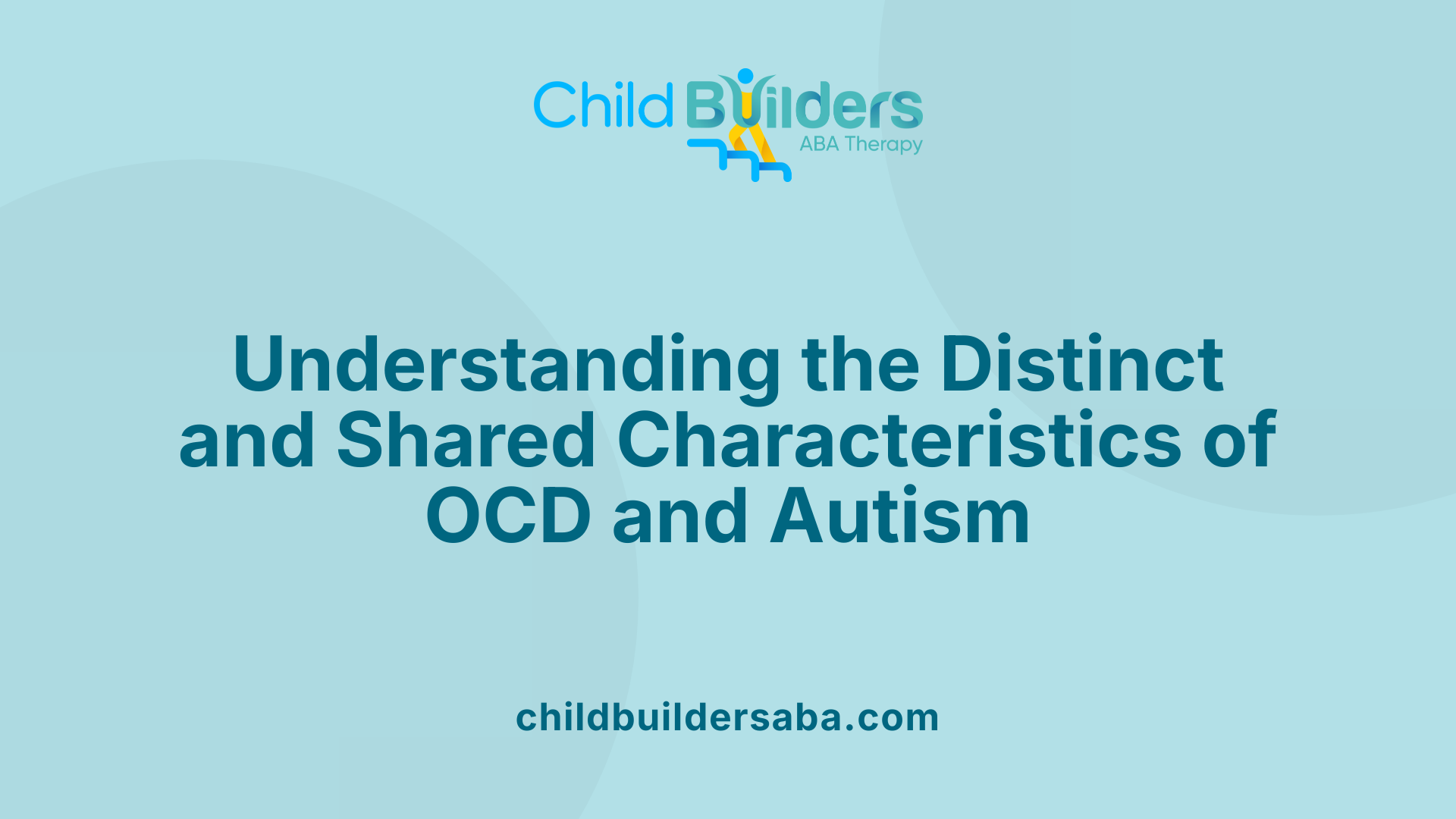
What are the clinical features and diagnostic criteria of OCD and autism?
Obsessive-Compulsive Disorder (OCD) and Autism Spectrum Disorder (ASD) are both complex conditions with distinct and overlapping features. Understanding their clinical presentation and the criteria used for diagnosis is key to accurate identification and effective support.
Characteristics of OCD include persistent, unwanted, and intrusive thoughts known as obsessions. These often involve fears of contamination, harm, or a need for orderliness and morality. The distress caused by these thoughts leads individuals to perform repetitive behaviors, or compulsions, such as washing, checking, or repetitive rituals, aimed at reducing anxiety. These behaviors are generally time-consuming, often taking up more than an hour daily, and significantly impair personal, social, and occupational functioning. Individuals with OCD are typically aware that their behaviors are irrational, yet feel compelled to perform them to relieve persistent anxiety.
Features of Autism involve primarily difficulties with social communication and interaction, along with restricted, repetitive behaviors. Common symptoms include trouble understanding social cues, making and maintaining eye contact, and engaging in reciprocal conversation. Repetitive behaviors—such as hand-flapping, rocking, or intense interests—serve as self-soothing or means to gain predictability, rather than to alleviate distress from fears. Autistic individuals often experience sensory sensitivities, either hyper- or hypo-reactivity to stimuli, which can influence their routines and responses. These behaviors usually start early in life, often before age 2, and are a core component of ASD.
Diagnostic methods for these conditions rely on thorough behavioral history, clinical observations, and standardized assessment tools. The DSM-5 criteria specify that OCD diagnosis involves the presence of obsessions and compulsions that are time-consuming and cause marked distress or impairment. For ASD, diagnosis is based on persistent deficits in social communication and interaction, coupled with restricted and repetitive patterns of behavior or interests, with symptoms evident in early developmental periods.
Both conditions sometimes overlap in symptoms such as repetitive behaviors and sensory sensitivities. Studies indicate that about 17-25% of autistic individuals also meet criteria for OCD, highlighting the importance of careful differential diagnosis.
Assessment strategies include specific tools like the Yale-Brown Obsessive-Compulsive Scale (Y-BOCS) adapted for autistic populations, Autism Diagnostic Observation Schedule (ADOS), and other structured interviews. These assessments support clinicians in distinguishing between habitual or self-soothing routines of autism and the distress-driven rituals of OCD.
In summary, while OCD and autism share certain behavioral features, their underlying motivations, onset ages, and developmental contexts differ. Recognizing these differences enables tailored intervention strategies, ultimately improving outcomes for individuals affected by either or both conditions.
Differentiating Symptoms: Understanding Behavior and Motivation
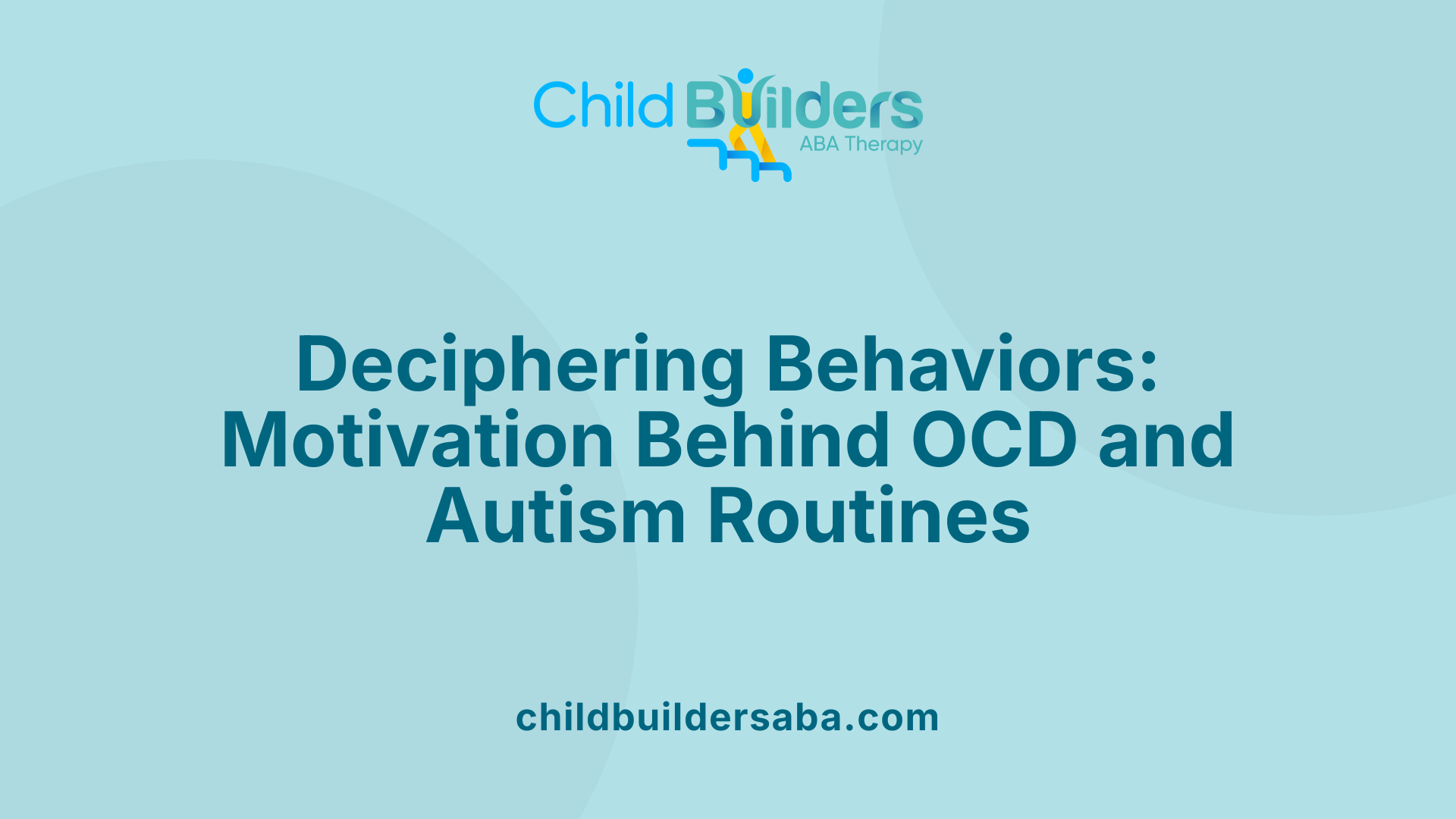
How can OCD and autism be differentiated based on symptoms and behaviors?
Differentiating between OCD and autism based on observable behaviors and underlying motivations involves a nuanced understanding of each condition’s core features.
In OCD, compulsive behaviors are driven by intrusive thoughts—distressing, unwanted, and often linked to fears of contamination, harm, or moral concerns. These compulsions are performed with the intent to neutralize or alleviate anxiety caused by obsessive fears. For example, a person might repeatedly wash their hands because they believe it will prevent harm or contamination. These behaviors are ego-dystonic, meaning they are experienced as intrusive and unwanted, causing significant distress.
Conversely, autism features repetitive behaviors like stimming (hand flapping, rocking) and narrow interests that are often pleasurable, self-soothing, or serve developmental routines. These behaviors are typically ego-syntonic, meaning individuals find them satisfying or comforting without distress. For instance, a child may spin objects or engage in repetitive movements because they find it calming or enjoyable, not because it is driven by fear.
Functionally, OCD behaviors aim to reduce anxiety linked to specific fears, often performed in response to intrusive thoughts. Autism routines or interests, however, generally provide sensory regulation, structure, or social engagement, and are not necessarily associated with anxiety.
Impact of the age of onset and developmental history also plays a role. Autism traits are usually recognizable by age 2 and remain consistent or evolve slowly, whereas OCD tends to develop later, typically between ages 8 and 12.
Understanding the nature of obsessions further distinguishes these conditions. OCD obsessions are ego-dystonic, intrusive thoughts that clash with the individual’s self-perception, leading to compulsive acts to temporarily relieve distress. Autistic preoccupations or interests are often ego-syntonic, aligning with the individual’s identity or pleasurable pursuits.
Assessment can involve observation, clinical interviews, and specialized tools that consider developmental background, symptom context, and the individual’s subjective experience. Recognizing these differences ensures accurate diagnosis and informs effective treatment strategies, tailored to the underlying motivation of behaviors.
Challenges in Diagnosis: Overlapping Features and Diagnostic Strategies
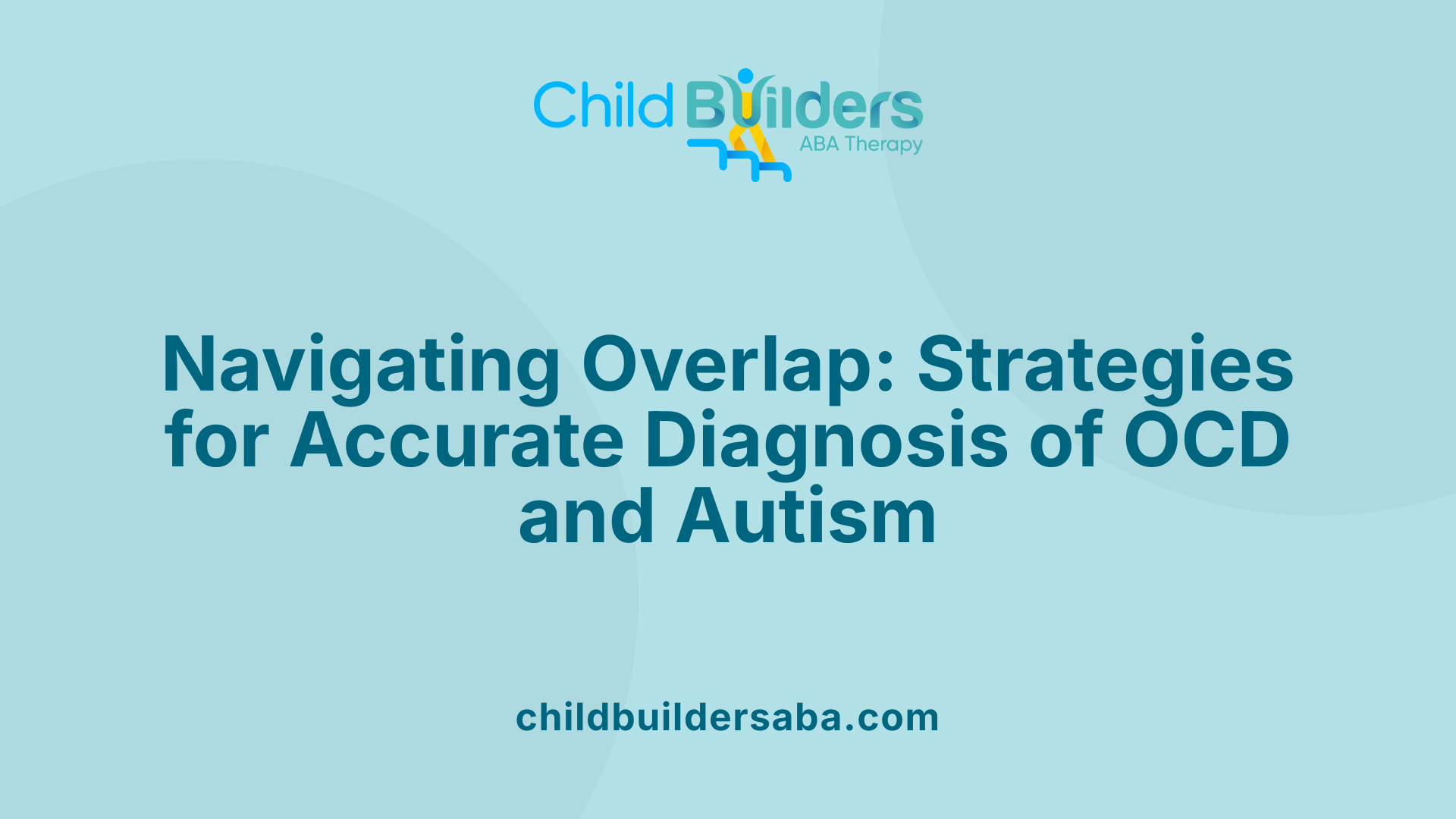
What are the challenges in differentiating OCD from autism, and how do clinicians address them?
Distinguishing obsessive-compulsive disorder (OCD) from autism spectrum disorder (ASD) poses significant challenges due to the overlap in behaviors such as repetitive routines, strict interests, and sensory sensitivities. Both conditions can manifest behaviors that seem similar on the surface but serve different functions and are driven by distinct emotional experiences.
In autism, repetitive behaviors—often called 'stimming'—are typically ego-syntonic, meaning they align with the individual’s preferences and serve self-soothing, sensory regulation, or self-expression purposes. These behaviors are usually pleasurable and are not necessarily distressing. For example, hand-flapping or spinning might help manage sensory overload or provide comfort.
Conversely, in OCD, compulsions and obsessions are ego-dystonic, meaning they are unwanted, intrusive, and cause significant distress. Individuals feel driven to perform compulsive rituals—like excessive handwashing or checking—not because they enjoy the activity, but to neutralize or reduce anxiety caused by persistent, distressing obsessions such as fears of contamination or harm.
Clinicians address these nuances through careful analysis of behavior content and emotional response. They evaluate whether behaviors are performed to alleviate anxiety or serve pleasurable or self-regulatory functions. Understanding the motivation and emotional valence behind behaviors helps differentiate the two conditions.
Furthermore, detailed developmental histories are essential to observe the onset and progression of symptoms. Autism-related behaviors typically appear very early, before age 2, and are consistent across different contexts, whereas OCD symptoms often emerge later, usually between ages 8 to 12, and can fluctuate with stress levels.
Assessment tools play a vital role in diagnosis. Standardized instruments tailored for autistic populations, such as the Autism Spectrum Addendum to the Anxiety Disorders Interview Schedule, alongside measures like the Anxiety Scale for Children—ASD, can help identify OCD symptoms distinct from autism traits.
Given the frequent co-occurrence, a multidisciplinary approach involving psychologists, psychiatrists, occupational therapists, and developmental specialists is recommended. This team assesses behavior, emotional responses, developmental history, and functional impairment.
Treatment strategies vary based on accurate diagnosis. OCD often responds well to exposure and response prevention (ERP) therapy and selective serotonin reuptake inhibitors (SSRIs). In contrast, autism interventions focus on social communication, behavioral flexibility, and sensory regulation, with adaptations made when OCD co-occurs.
In conclusion, differentiating OCD from autism requires nuanced understanding and careful investigation of behavior functions, emotional experiences, and developmental patterns. Employing comprehensive assessments and multidisciplinary teams ensures accurate diagnosis and guides effective, individualized treatment plans.
Co-Occurrence and Research Evidence of Comorbidity
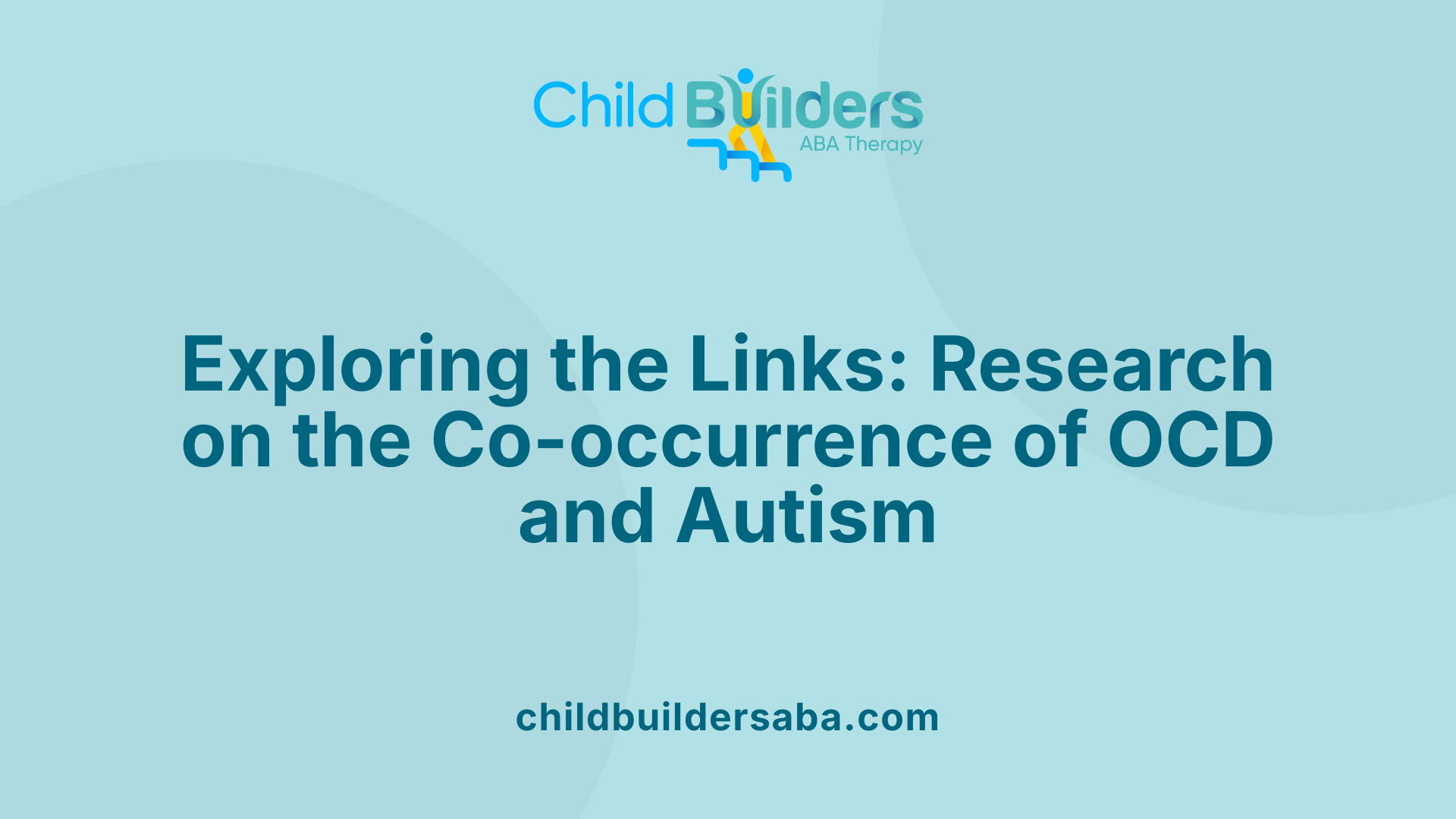
Can OCD and autism co-occur, and what does research say about their comorbidity?
OCD and autism spectrum disorder (ASD) frequently appear together, making co-occurrence a significant aspect for clinicians to consider. Evidence indicates that approximately one-quarter (around 25%) of young people diagnosed with OCD also meet criteria for autism. Conversely, studies estimate that about 5% of individuals with ASD have comorbid OCD, highlighting a notable overlap that may sometimes be underdiagnosed in clinical settings.
Research on adults with high-functioning autism reveals that a substantial number experience either current or past OCD symptoms. These cases often present with more pronounced difficulties in social functioning and cognitive flexibility, adding complexity to their clinical profile. The bidirectional risk — meaning each condition increases the likelihood of developing the other over time — supports the idea of shared neurodevelopmental pathways.
Genetic studies show familial links between OCD and autism. Families with one diagnosed member tend to have increased rates of both conditions, suggesting common genetic factors or overlapping neurobiological mechanisms. These findings are reinforced by neuroimaging research, which demonstrates similar patterns of brain activity, particularly involving the caudate nucleus, a brain region involved in routines and stereotyped behaviors.
Understanding that OCD and autism often co-occur emphasizes the importance of comprehensive assessment. Addressing both conditions simultaneously allows for more effective interventions. Tailored approaches that combine social skills training, behavioral therapies, and anxiety management are essential, as traditional treatments may be less effective when symptoms of both disorders are present.
Prevalence rates of OCD in autism and vice versa | Autism | OCD Prevalence | Notes | | --- | --- | --- | | Children with ASD | Approximately 17-25% | Higher than in the general population; underscores comorbidity | | Adults with high-functioning ASD | Significant portion experience OCD symptoms | Often associated with increased social and cognitive impairments | | General population | Estimated OCD prevalence | About 1.2% | Lower than in ASD populations, indicating increased risk in autistic individuals |
Research findings supporting comorbidity |
- High familial aggregation suggests shared genetic vulnerabilities.
- Longitudinal studies reveal increased risk of developing OCD in individuals with early ASD traits, and vice versa.
- Neuroimaging points to overlapping brain circuits, especially involving the caudate network.
- Behavioral studies show similar repetitive behaviors, but with different functions: self-soothing in autism and anxiety reduction in OCD.
Shared neurobiological features and genetic links |
- Both conditions involve dysfunction in neural circuits related to routines and stereotyped behaviors.
- Genetic research supports a familial link, indicating possible common genetic underpinnings.
- Sensorimotor and sensory processing differences are evident, contributing to overlapping behaviors and sensitivities.
Recognizing the overlap between OCD and autism is crucial for mental health professionals. Accurate diagnosis enables the development of comprehensive treatment plans tailored to manage symptoms across both conditions, ultimately improving the quality of life for affected individuals.
Treatment Strategies: Addressing Dual Diagnoses Effectively
What are the current treatment options for managing OCD and autism, especially when they co-occur?
Treating OCD in individuals with autism involves a nuanced approach that considers the specific characteristics of both conditions. Cognitive-behavioral therapy (CBT), particularly exposure and response prevention (ERP), is widely regarded as the most effective psychological treatment for OCD. However, because autistic individuals often experience communication challenges and sensory sensitivities, standard CBT protocols are typically adapted.
Adaptations may include increasing the structure of therapy sessions, utilizing visual supports such as schedules, charts, or social stories, and incorporating concrete activities to facilitate understanding. Therapists often involve caregivers or family members to support skill development and generalization outside therapy. This approach helps manage OCD symptoms while respecting the individual’s sensory and social needs.
Medication is another essential component of treatment. Selective serotonin reuptake inhibitors (SSRIs), like sertraline or fluoxetine, have demonstrated efficacy in reducing OCD symptoms across populations. Nonetheless, in autistic individuals, careful monitoring of side effects and tolerability is critical, given the heightened sensory sensitivities and potential for adverse reactions.
Apart from targeted OCD therapies, addressing core autism features can complement treatment. Interventions such as social skills training, anger management, and sensory regulation strategies contribute to overall well-being. These support broader functioning and reduce anxiety, which may exacerbate OCD symptoms.
A multidisciplinary team approach is often most effective. This involves psychologists, psychiatrists, speech and occupational therapists, and medical providers working collaboratively. The integration of tailored psychological interventions, appropriate medication, and supportive therapies offers the best chance for managing symptoms effectively.
Overall, personalized treatment plans that consider individual preferences, behavioral patterns, and sensory profiles tend to produce the most favorable outcomes. Ongoing assessment allows modifications to therapy and medication based on progress and changing needs, ensuring that interventions remain relevant and effective.
Support Strategies and Support for Co-Occurring Conditions
What are the challenges faced by individuals with both OCD and autism, and how can they be supported?
Co-occurring OCD and autism present a complex clinical picture that requires nuanced understanding and tailored support. Individuals may experience heightened sensory sensitivities, such as hypersensitivity to sounds, textures, or lights, which can intensify compulsive behaviors or self-stimming routines. Communication difficulties, including limited expressive language or challenges interpreting social cues, can make it harder for these individuals to express distress or needs.
Repetitive behaviors are common in both conditions but serve different functions. In autism, these routines often provide comfort, predictability, and sensory gratification. In OCD, compulsions are driven by anxiety related to intrusive thoughts and are performed to reduce this distress. The overlap can lead to confusion, making accurate diagnosis vital.
Support strategies should focus on creating a supportive environment that respects the individual's sensory preferences and cognitive style. Modified cognitive-behavioral therapy (CBT), especially exposure and response prevention (ERP), can be adapted to be more accessible. This may include using visual aids, incorporating special interests, and conducting therapy in a sensory-friendly setting.
Family involvement plays a critical role. Educating family members about the nature of both conditions helps in developing consistent routines and understanding behaviors without judgment. Family-based interventions can help reduce stress and improve communication.
Addressing sensory sensitivities requires working with occupational therapists to develop personalized sensory diets that help regulate sensory input, minimizing triggers for distress or compulsive behaviors.
Medication management also needs careful monitoring. SSRIs are commonly used to treat OCD symptoms but may have variable effectiveness in autistic individuals. Regular assessment of medication effects, side effects, and the individual's overall response is essential. Adjustments should be made based on ongoing evaluation.
A multidisciplinary approach is essential, involving mental health professionals, occupational therapists, speech-language therapists, and medical providers. Each team member contributes to forming a comprehensive treatment plan tailored to the individual's unique profile.
Ultimately, understanding the distinctive motivations behind behaviors and adopting an empathetic, flexible, and individualized support plan are vital. This approach promotes better management of both conditions, enhances quality of life, and fosters greater independence and well-being.
Misconceptions and Clarifying Common Questions about OCD and Autism
Are there common misconceptions about OCD and autism that need clarification?
Yes, there are several misconceptions surrounding OCD and autism that can hinder accurate understanding and effective treatment. One widespread myth is that repetitive behaviors in both conditions are the same. However, the functions and emotional experiences behind these behaviors differ significantly.
In autism, repetitive behaviors such as stimming — which includes hand flapping, rocking, or repeating words — are typically pleasurable, sensory-seeking, or self-soothing activities. These behaviors help individuals manage sensory sensitivities and provide comfort or a sense of stability. They are often ego-syntonic, meaning the individuals find them enjoyable or meaningful, and they may serve specific routines or interests.
Contrastingly, OCD compulsions are distressing, unwanted rituals performed to neutralize or reduce anxiety caused by intrusive, often irrational thoughts known as obsessions. For example, a person might repeatedly wash their hands to alleviate a fear of contamination. These behaviors are ego-dystonic, meaning the individual experiences them as troubling and involuntary, often feeling compelled to perform them despite recognizing their irrationality.
Another common misunderstanding is that OCD only affects neurotypical individuals. Research indicates a considerable overlap, with about 17% of young autistic people also experiencing OCD symptoms, and estimates suggesting that up to 37% of autistic adults meet criteria for OCD. This connection underscores that OCD can affect anyone, including those with neurodevelopmental conditions.
The challenge arises because some behaviors, such as strict routines or resistance to change, are characteristic of both autism and OCD. The key to differentiation lies in understanding the motivation and emotional context: if behaviors serve to alleviate anxiety and are distressing when prevented, they are likely compulsions. If behaviors are driven by interests or sensory preferences and are pleasurable, they may be part of autism’s repetitive behaviors.
Misunderstanding these differences can lead to misdiagnosis or ineffective interventions. For example, treating autism-related routines as OCD compulsions without recognizing their positive function can cause unnecessary distress or reduce quality of life. Conversely, missing OCD symptoms can leave individuals suffering from ongoing anxiety that requires targeted therapy.
Therefore, accurate differentiation requires a nuanced understanding of the behaviors' motives, context, and emotional impact. Employing specialized assessments and considering the individual's developmental history are vital steps in establishing the correct diagnosis.
Overall, raising awareness of these distinctions fosters better clinical practices and supports individuals in receiving appropriate interventions tailored to their specific needs.
Special Considerations in Adult Diagnosis and Gender Differences
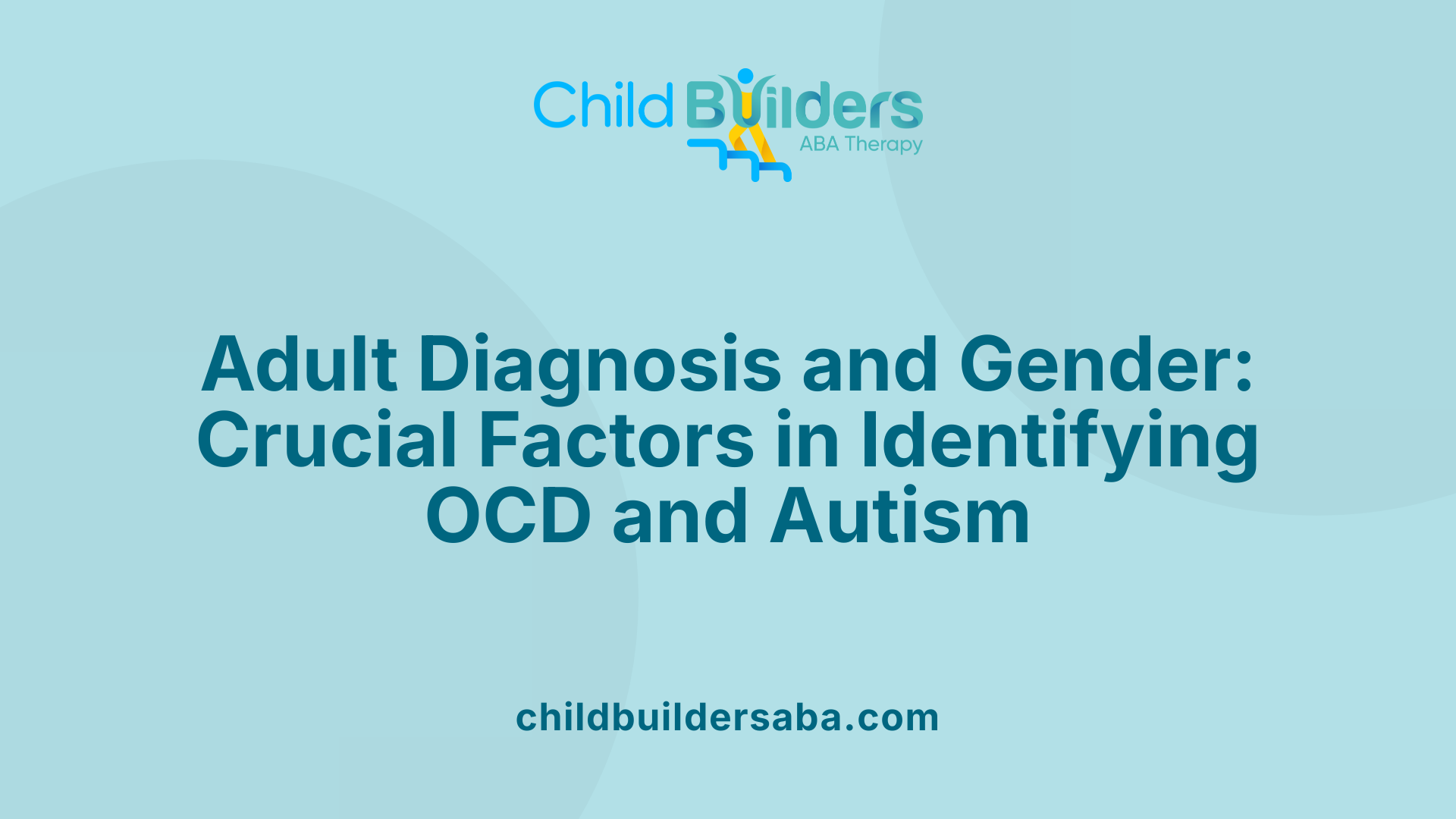
What should be considered when diagnosing OCD versus autism in adults?
Diagnosing OCD versus autism in adults requires careful consideration of developmental history, behavioral motivations, and symptom presentation. Autism is a neurodevelopmental condition that begins early in childhood, often identifiable by age 2, with persistent difficulties in social communication, repetitive behaviors, and sensory sensitivities.
In contrast, OCD can emerge at any stage of life, frequently in childhood or adolescence. Its hallmark features are intrusive, unwanted thoughts called obsessions and repetitive behaviors or mental rituals called compulsions performed to reduce anxiety.
When evaluating adults, clinicians need to scrutinize the purpose and function behind repetitive behaviors. For example, self-soothing behaviors such as stimming are common in autism and typically pleasurable or calming. In OCD, however, compulsive actions are driven by fears—such as contamination or harm—and often cause distress.
Assessment tools and clinical interviews should explore whether behaviors are ego-syntonic (pleasurable, consistent with self-image as in autism) or ego-dystonic (distressing and unwanted, characteristic of OCD). Since overlapping symptoms like sensory sensitivities and routines complicate diagnosis, obtaining a detailed developmental history and observing the context of behaviors are vital.
Standardized screening instruments adjusted for adult populations and co-occurring conditions like anxiety or depression can support accurate identification. Overall, an integrated approach that assesses motivations, behaviors, and emotional responses helps differentiate autism from OCD effectively in grown individuals.
Are there differences in how OCD and autism present in different genders?
Gender differences significantly influence the presentation of both autism and OCD. Females with autism often develop camouflaging strategies to mask their social difficulties. These strategies include subtle social mimicry, suppressing stimming, and overcompensating socially, which can obscure the diagnosis.
As a result, many females with autism are underdiagnosed or diagnosed later than males, especially those with high-functioning autism or Asperger's syndrome. Their repetitive behaviors may be less overt and linked more to internal interests or subtle routines.
OCD symptoms also show gender variation. Females are more likely to experience obsessions related to themes of contamination, safety, or morality and often manifest with higher levels of internalizing symptoms like anxiety and depression. Their compulsions tend to be more cognitive, such as mental checking or reassurance seeking.
Studies highlight that females may internalize symptoms more, leading to diagnoses that focus on anxiety or mood disorders, missing underlying OCD or autism traits. Conversely, males typically display more obvious stereotyped behaviors or external compulsions.
Adolescence is a critical period where gender differences become more apparent, with females often experiencing a greater emotional burden from their symptoms. Understanding these gender-specific presentation patterns allows clinicians to tailor assessments and interventions, improving diagnostic accuracy and treatment effectiveness.
| Aspect | Typical Male Presentation | Typical Female Presentation | Underlying Factors |
|---|---|---|---|
| Autism symptoms | Overt stimming, social challenges | Camouflaging, subtle social difficulties | Social expectations, expressive ability |
| OCD themes | Contamination, harm, symmetry | Contamination, moral, internalized worries | Internalizing tendencies, emotional processing |
| Diagnostic challenges | Clear stereotyped behaviors | Masking behaviors, internal preoccupations | Gender socialization, symptom concealment |
Through recognizing these differences, clinicians can ensure more accurate diagnosis and personalized support strategies for all genders.
Summary and Final Thoughts on OCD and Autism
Differentiating between OCD and autism involves understanding their core features, developmental trajectories, and functional purposes of behaviors. While overlaps exist, careful analysis of motivations, emotional responses, and onset ages guides accurate diagnosis. Recognizing the high comorbidity and shared neurobiological features informs more effective, tailored treatments. Addressing misconceptions enhances awareness, leading to better support and outcomes for individuals facing these complex, often co-occurring conditions. Continued research and nuanced clinical approaches are essential for improving care and understanding for those with OCD, autism, or both.
References
- OCD vs. Autism | Understanding Co-Occurrence and Misdiagnosis
- OCD and Autism - International OCD Foundation
- OCD - National Autistic Society
- OCD vs. Autism: Similarities and differences - Medical News Today
- OCD and Autism: Similarities and Differences
- Obsessive-Compulsive, Psychotic, and Autism Dimensions Overlap ...
- OCD vs Autism | Prosper Health
- 'Autism is the Arena and OCD is the Lion': Autistic adults ...
- Understanding the Intersection of Autism & OCD - AANE



.jpg)

































































































